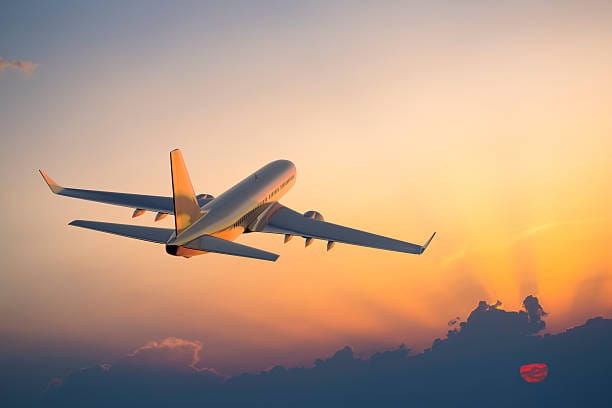Comprehensive Guide to Understanding Flight Details: Everything You Need to Know
Planning a flight involves numerous details, from booking the ticket to understanding airline policies, layovers, and baggage allowances. Whether you’re a frequent flyer or a first-time traveler, mastering flight details can significantly improve your overall experience. This guide dives into every aspect of understanding flight details, giving you the tools to make your air travel more seamless and enjoyable.
Table of Contents:
- Introduction to Flight Details
- How to Book the Perfect Flight
- 2.1 Choosing Your Destination and Dates
- 2.2 Selecting the Right Airline
- 2.3 Types of Flights: Direct, Non-Stop, Connecting
- Understanding Your Ticket
- 3.1 Ticket Class: Economy, Business, First-Class
- 3.2 Codeshare Flights
- 3.3 Baggage Allowance and Policies
- Pre-Flight Preparation
- 4.1 Online Check-In and Seat Selection
- 4.2 What to Pack: Carry-On and Checked Luggage
- 4.3 Airport Arrival and Security Process
- In-Flight Experience
- 5.1 Comfort and Seating
- 5.2 Meals, Refreshments, and In-Flight Entertainment
- 5.3 Managing Long-Haul Flights
- Post-Flight Procedures
- 6.1 Navigating Baggage Claim
- 6.2 Customs and Immigration Process
- 6.3 Transfers and Connecting Flights
- Common Terminology in Flight Details
- The Future of Air Travel: New Technologies and Trends
- Tips for Efficient and Stress-Free Air Travel
- Conclusion: Why Flight Details Matter

1. Introduction to Flight Details
When traveling by air, understanding flight details is crucial to ensure smooth and stress-free travel. From choosing the right flight to arriving at your destination without issues, flight details encompass a wide range of information, including ticket class, baggage rules, layovers, and more. In this comprehensive guide, we will walk you through every step of understanding flight details, so you can plan and manage your air travel with confidence.
2. How to Book the Perfect Flight
The flight booking process is more than just selecting dates and destinations. To book the right flight, you need to take into account several factors such as airline options, flight durations, layovers, and ticket prices. Here’s how to navigate the booking process efficiently:
2.1 Choosing Your Destination and Dates
The first step in booking a flight is choosing where and when you want to go. Considerations include:
- Time of Year: Popular destinations often experience peak seasons, which can affect ticket prices and availability.
- Travel Flexibility: If you’re flexible with your dates, use fare comparison tools to find the best prices. Many websites offer fare calendars that highlight the cheapest travel dates.
- International Travel: Ensure that your passport and any necessary visas are valid before booking international flights.
2.2 Selecting the Right Airline
When choosing an airline, think about the following:
- Cost vs. Service: Budget airlines may offer cheaper flights but often charge extra for checked luggage, seat selection, and meals. Full-service airlines usually include these amenities in the ticket price.
- Frequent Flyer Programs: If you travel often, consider choosing an airline that partners with your preferred frequent flyer program to earn miles for future flights.
- Airline Reputation: Research reviews for customer service, on-time performance, and safety records.
2.3 Types of Flights: Direct, Non-Stop, Connecting
Understanding the different types of flights can help you make a better decision:
- Non-Stop Flights: These flights take you directly to your destination without stopping. They are often more expensive but save time.
- Direct Flights: Direct flights may have one or more stops but don’t require a change of planes.
- Connecting Flights: These flights involve changing planes at least once. While they may be cheaper, they can add several hours to your journey.
3. Understanding Your Ticket
Once you’ve selected your flight, the next step is understanding the details of your ticket. Each flight ticket contains crucial information regarding class, baggage, and sometimes even the services offered during your flight.
3.1 Ticket Class: Economy, Business, First-Class
Flight tickets come in various classes:
- Economy Class: The most affordable option, economy class offers basic seating, meals (on longer flights), and limited legroom.
- Premium Economy: A step above economy with slightly better seats, more legroom, and sometimes enhanced meal options.
- Business Class: Business class offers lie-flat seats, better meals, and access to airline lounges.
- First Class: The most luxurious option, first-class features private suites, gourmet dining, and personalized service.
3.2 Codeshare Flights
Codeshare flights occur when two or more airlines share the same flight. This can sometimes cause confusion as your ticket might be with one airline, but the flight is operated by another. Ensure you know which airline is operating your flight for check-in and boarding.
3.3 Baggage Allowance and Policies
Each airline has different baggage policies, including:
- Carry-On Baggage: Most airlines allow at least one carry-on bag and a personal item. Check the size and weight limits before packing.
- Checked Baggage: Some tickets include free checked baggage, while others charge based on the number of bags and weight.
- Excess Baggage Fees: Be aware of additional fees for overweight or oversized luggage.
4. Pre-Flight Preparation
Proper preparation before your flight is essential to ensure a smooth journey.
4.1 Online Check-In and Seat Selection
Most airlines allow you to check in online 24 to 48 hours before departure. During this time, you can:
- Choose Your Seat: Whether you prefer a window or aisle seat, or want to upgrade to extra-legroom, seat selection is critical for comfort.
- Boarding Pass: Print your boarding pass or download it to your smartphone.
4.2 What to Pack: Carry-On and Checked Luggage
Packing efficiently can save you time and money. Here’s what you should consider:
- Carry-On Essentials: Include valuables, documents, electronics, and anything you’ll need during the flight.
- Checked Luggage: Pack heavier and less essential items in your checked bag, ensuring it meets the airline’s weight limits.
- Liquid Restrictions: Follow the TSA 3-1-1 rule, where liquids in carry-on bags must be in 3.4 oz containers or less, and stored in a clear, quart-sized bag.
4.3 Airport Arrival and Security Process
Arrive at the airport at least two hours before a domestic flight and three hours before an international flight. During this time, you’ll need to:
- Check Your Luggage: Drop off your checked baggage at the airline’s counter.
- Security Screening: Remove electronics, liquids, and large items from your bags for X-ray screening, and follow the airport’s procedures for body scanners or metal detectors.
5. In-Flight Experience
Whether you’re flying short-haul or long-haul, understanding what to expect on your flight can make your journey more comfortable.
5.1 Comfort and Seating
To make your flight more enjoyable:
- Seat Comfort: Economy seats can be cramped, so consider bringing a neck pillow, travel blanket, or compression socks to stay comfortable.
- Legroom: Check the legroom available on your flight before selecting seats, especially for long journeys.
- Move Around: If you’re on a long flight, get up and walk every few hours to prevent stiffness and promote blood circulation.
5.2 Meals, Refreshments, and In-Flight Entertainment
Airlines offer different levels of service depending on your ticket class and flight duration:
- Meals: On longer flights, meals are often provided. For budget airlines or shorter flights, you may need to purchase food or snacks on board.
- Entertainment: Many airlines offer in-flight entertainment systems with movies, TV shows, and music. Some flights also provide Wi-Fi (for a fee or for free on premium services).
5.3 Managing Long-Haul Flights
Long-haul flights require extra planning:
- Stay Hydrated: Drink plenty of water, as the cabin air can be dry.
- Sleep: Bring an eye mask, earplugs, or noise-canceling headphones to help you sleep.
- Stretch: Perform simple stretches in your seat to avoid cramps and muscle fatigue.
6. Post-Flight Procedures
After landing, there are several steps to complete before you leave the airport.
6.1 Navigating Baggage Claim
Once you land, proceed to the baggage claim area. Keep your baggage claim ticket handy in case your luggage gets delayed or lost.
6.2 Customs and Immigration Process
For international travel, you must go through customs and immigration:
- Immigration: Present your passport and any necessary visas.
- Customs: Declare any goods you’re bringing into the country, and ensure you’re not carrying prohibited items.
6.3 Transfers and Connecting Flights
If you have a connecting flight, check the boarding gate for your next flight and allow ample time to pass through security, customs, or immigration.
7. Common Terminology in Flight Details
To better understand your flight details, familiarize yourself with these common terms:
- Layover: A stop between flights, usually lasting a few hours.
- Red-Eye Flight: A flight that departs late at night and arrives early in the morning.
- Codeshare: A flight shared between two airlines, where one airline operates the flight, but multiple airlines sell tickets for it.
- IATA Code: A three-letter code representing an airport, such as LAX (Los Angeles International Airport) or JFK (John F. Kennedy International Airport).
8. The Future of Air Travel: New Technologies and Trends
The airline industry is rapidly evolving, with new technologies and innovations shaping the future of travel. Here are some trends to look out for:
- Biometric Boarding: Some airports are using facial recognition technology to streamline the boarding process.
- Eco-Friendly Flights: Airlines are increasingly focusing on sustainability, using biofuels and more fuel-efficient aircraft.
- Hyperloop and Supersonic Travel: While still in development, these advanced transportation technologies could revolutionize air travel by drastically reducing flight times.
9. Tips for Efficient and Stress-Free Air Travel
Here are some tips to make your air travel experience more enjoyable:
- Arrive Early: Give yourself plenty of time to get through security and relax before boarding.
- Pack Smart: Keep essentials in your carry-on, and ensure all your liquids meet the security requirements.
- Download Apps: Use airline apps to check in, track your flight, and get real-time updates on delays or gate changes.
- Stay Hydrated and Comfortable: Bring an empty water bottle to fill after security, and dress in layers for comfort.
10. Conclusion: Why Flight Details Matter
Understanding flight details is essential for stress-free travel. From booking the right flight and choosing your seat to navigating the airport and making your in-flight experience more enjoyable, every detail plays a role in ensuring a smooth journey. By paying attention to these key aspects, you’ll be better prepared for your next adventure, whether it’s a short domestic trip or a long international flight.
